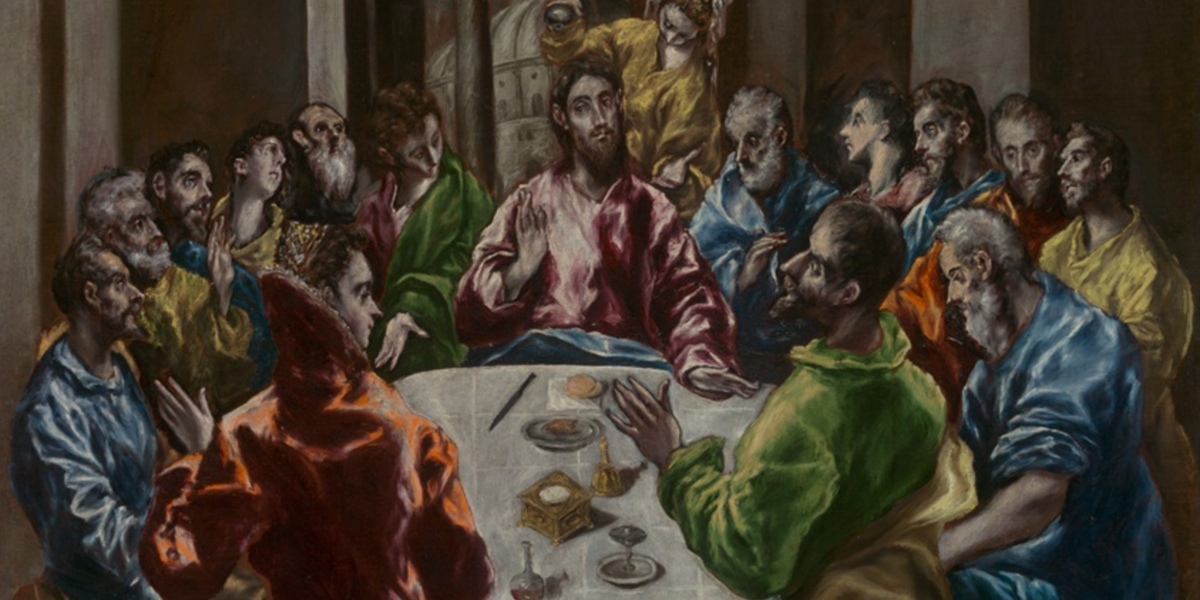About the Visual Commentary on Scripture
The Visual Commentary on Scripture (VCS) is a free, online resource that provides material for teaching, preaching, researching, and reflecting on the Bible, Art, and Theology.
Our website features:
- Over 1000 high-resolution images
- Artworks ranging from antiquity to the present day
- Old Testament/Hebrew Bible, New Testament and Apocryphal texts
- Commentaries by Theologians, Art Historians, and Biblical Scholars.
Watch a short introduction to the VCS by Director Ben Quash in the video below.
More About the VCS Website
The Visual Commentary on Scripture is a freely accessible online publication that provides theological commentary on the Bible in dialogue with works of art. It helps its users to (re)discover the Bible in new ways through the illuminating interaction of artworks, scriptural texts, and commissioned commentaries.
The VCS combines three academic disciplines: theology, art history, and biblical scholarship. While the project’s main commitment is to theology, it is responsibly informed by the latter two disciplines.
Each section of the VCS is a virtual exhibition comprising a biblical passage, three art works, and their associated commentaries. The curators of each exhibition select artworks that they consider will open up the biblical texts for interpretation, and/or offer new perspectives on themes the texts address. The commentaries explain and interpret the relationships between the works of art and the scriptural text.
The virtual exhibitions of the VCS aim to facilitate new possibilities of seeing and reading so that the biblical text and the selected works of art come alive in new and vivid ways.
Watch a three-way conversation between scholars working in the disciplines of theology, art history, and biblical scholarship about Caravaggio's Supper at Emmaus at the National Gallery, London.
Follow The VCS on Twitter: @TheVCS
The Theological and Hermeneutical Principles of the VCS
The objective of the Visual Commentary on Scripture (VCS) is to be a constructive contribution to those living traditions of thought and practice that converse with the Bible as an authoritative resource in contemporary contexts.
The contributors who are invited to write for the VCS are asked to make art-historically-informed but theologically-based selections of images. Each page of the VCS is theologically ‘curated’.
A central premise of the VCS’s approach is that the ‘world(s)’ of experience and action that the Scriptures describe can speak meaningfully to the ‘world(s)’ that present-day interpreters of the Scriptures continue to inhabit; and that the ‘world(s)’ to which art has responded in every epoch can speak meaningfully to both. Indeed, each one of these ‘worlds’ can illuminate the other two. The confidence that such interpretations can be developed and shared across historical, geographical, and cultural differences is based on the premise there is one world (though never one perspective on it) that all human beings inhabit.
Contributors are encouraged to choose artworks on grounds that are comparable to those that governed the choice of commentary for inclusion in Jewish Talmud or in Christian Catenae. Commentary texts from the Rabbis or the Church Fathers were chosen for inclusion not because they all said the same thing, but because they each in their own way seemed to have a certain authority.
It can be argued that such authority derived from their generativity or fruitfulness (as commentary) for the communities whose sacred texts they interpreted. And fruitfulness of this ‘authoritative’ kind can in part be traced to three key factors:
- The quality of attention the commentators paid to the sacred texts which were their concern;
- The power of insight they brought to these texts and/or their themes; and
- The way their insights fostered a lively dialogue with fellow commentators and the unfolding experiences of an historical people.
- Each page of these collections became a dramatic event; potentially an ‘epiphany’.
We look for the same sorts of virtues in works of art (quality of attention, power of insight, dialogical potential) when selecting them for inclusion in the VCS. Each particular artwork chosen to accompany a biblical passage need not manifest all three qualities, but most will exemplify at least two.
The theological hermeneutics of the VCS claim continuities with the seminal defences of the role of images in Christianity advanced by those like John of Damascus and Theodore the Studite in the eighth–ninth centuries. The VCS is written and edited with an eye to all three of the main purposes John sets out.
First, it seeks to instruct those with little knowledge of the Bible about its contents. We hope this will be part of the strategic ‘impact’ of this project.
Second, it uses the warrant of the Incarnation to affirm that physical sight can be a pathway to spiritual insight:
When you see the Bodiless become man for your sake, then you may depict the figure of a human form; when the Invisible becomes visible in the flesh, then you may depict the likeness of something seen. … [J]ust as [through] words perceived by the senses we hear with bodily ears, and understand what is spiritual, so through bodily vision we arrive at spiritual contemplation (John of Damascus In Defense of Icons 1.16, 3.12)
Third, the VCS aims to refresh viewers and engage their affective responses as well as their intellectual ones, affirming that images are made ‘to be gazed upon, so that we might glorify God and be filled with wonder and zeal’.
Ben Quash
Director of the Visual Commentary on Scripture Project
November 2018











